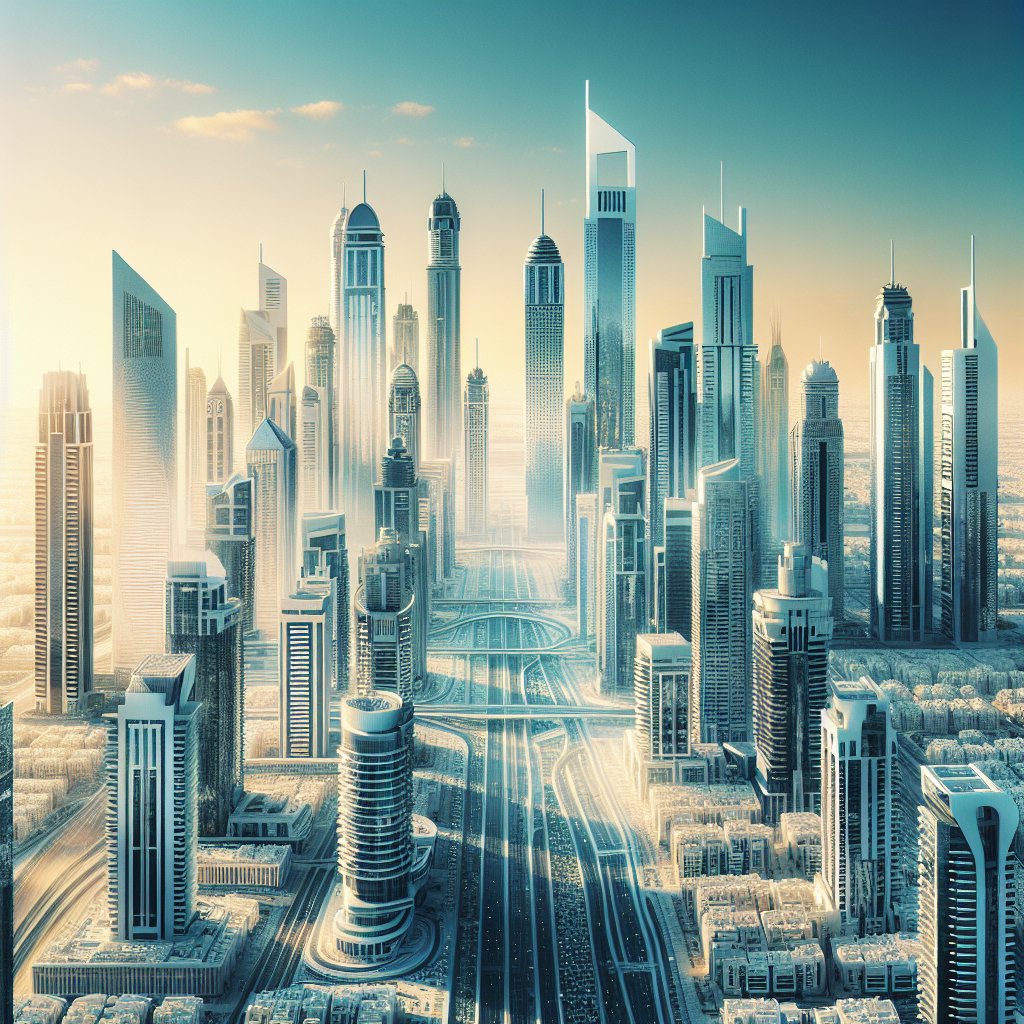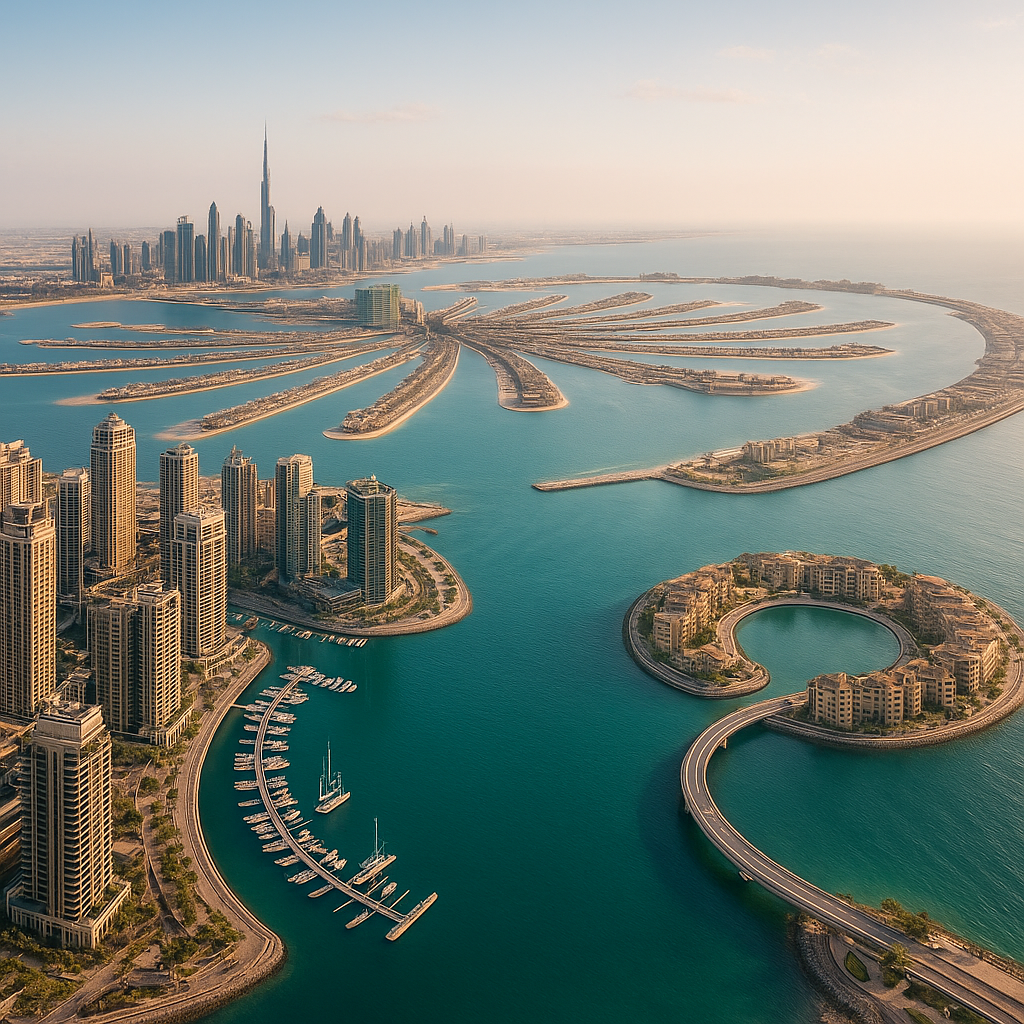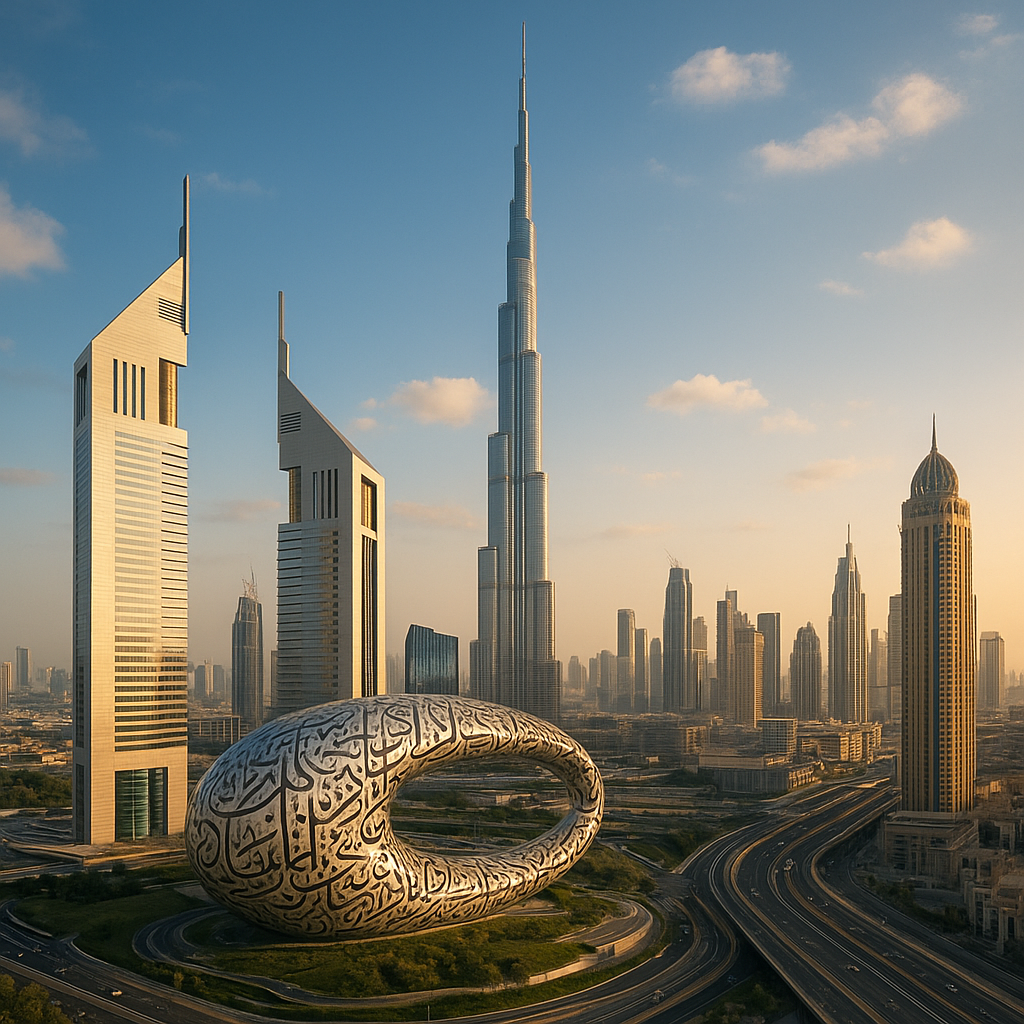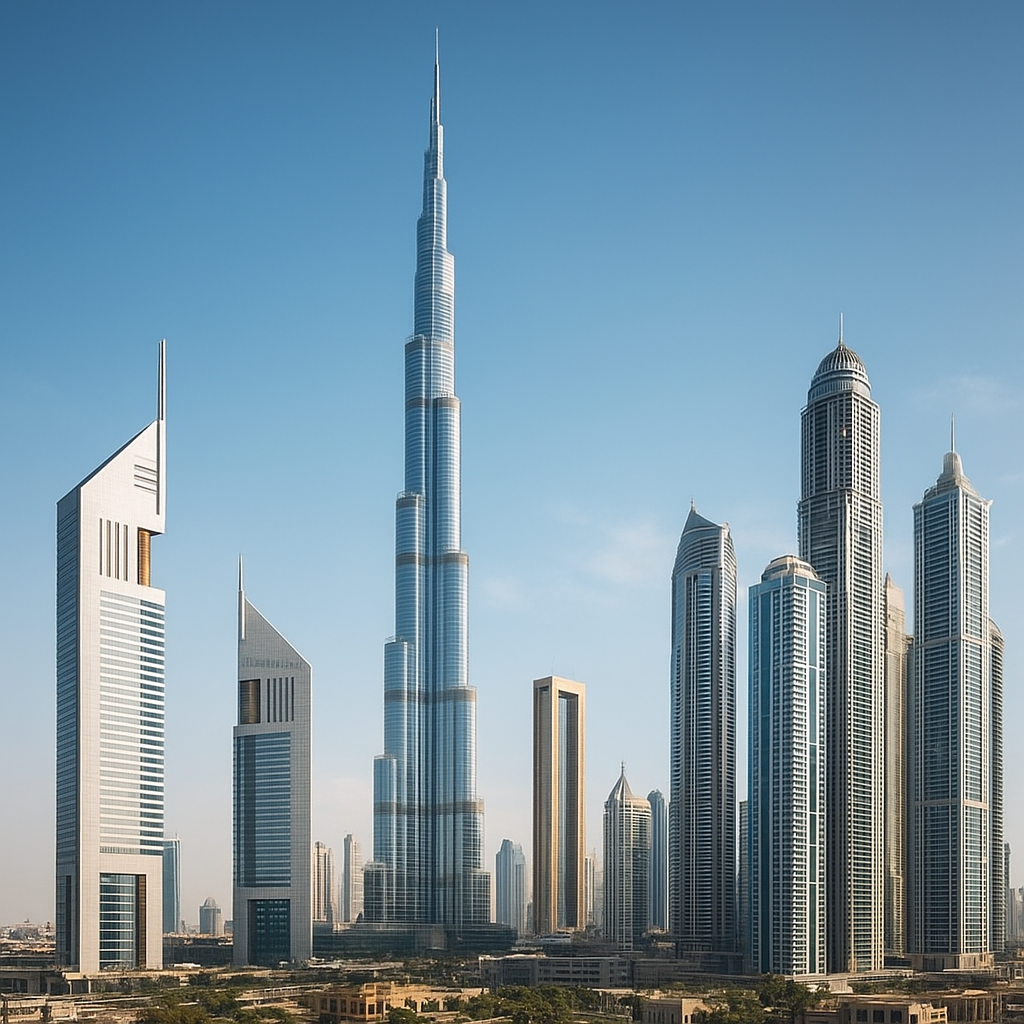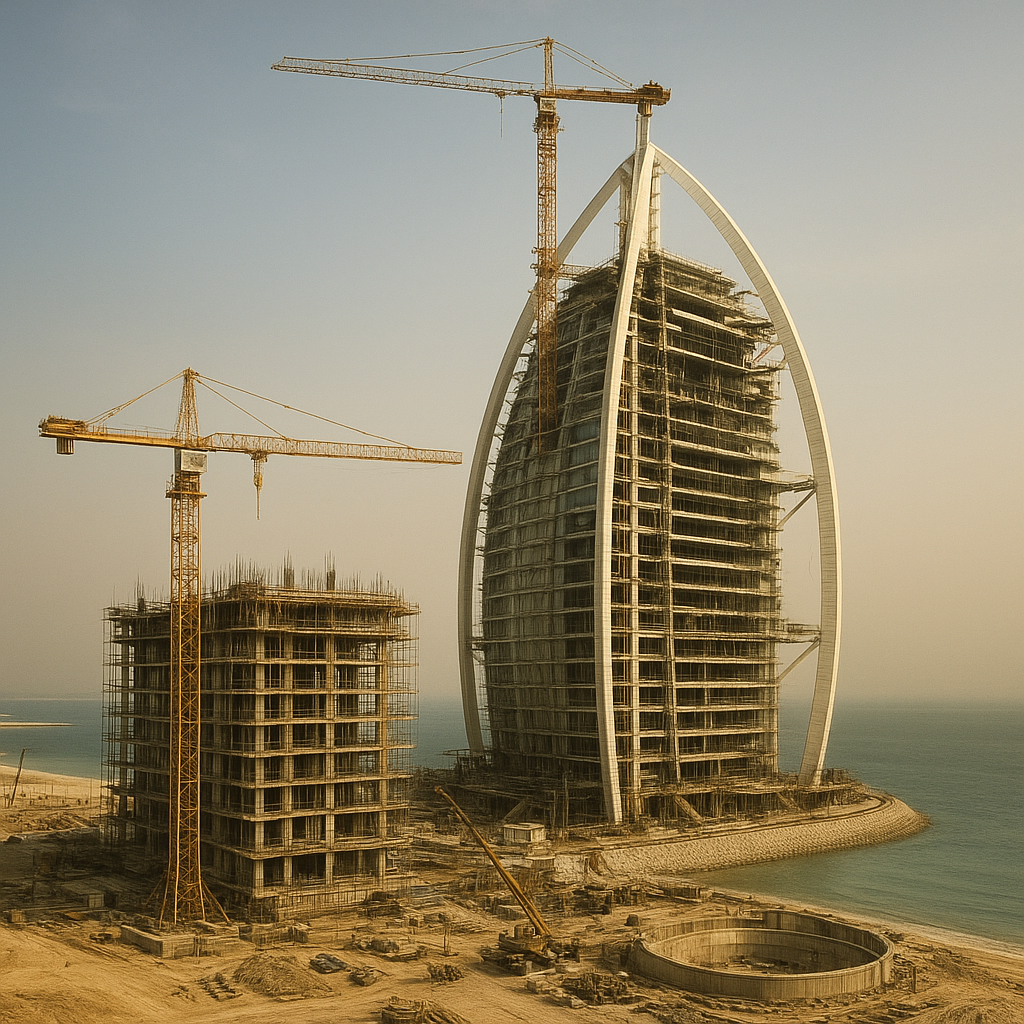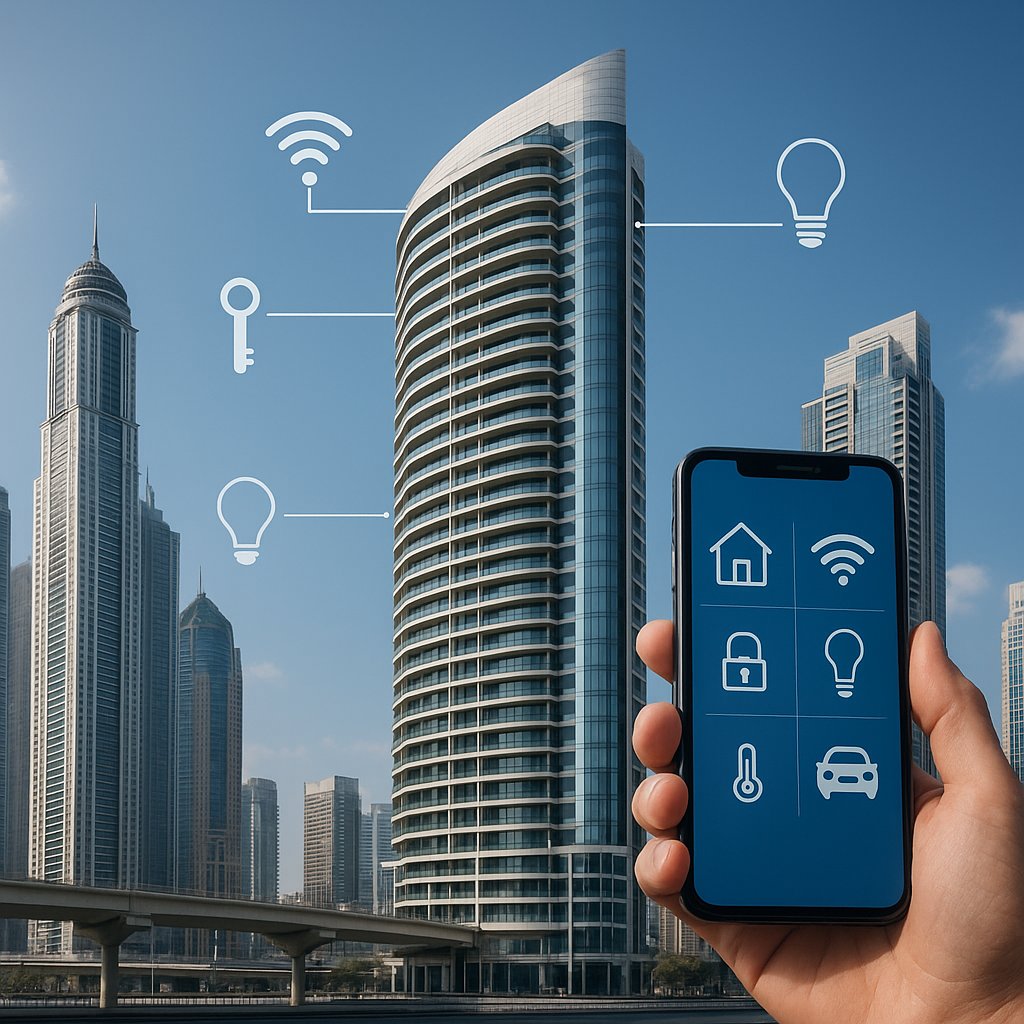Dubai, a city renowned for its opulence and innovation, has become a global hub where art and architecture intersect in breathtaking ways. This unique blend is evident in its skyline, where futuristic skyscrapers stand alongside artistic installations, creating a cityscape that is both a visual feast and a testament to human creativity.
The Evolution of Dubai’s Architectural Landscape
Dubai’s architectural journey began in the mid-20th century, transforming from a modest trading port into a metropolis known for its ambitious projects. The city’s rapid development was fueled by the discovery of oil in the 1960s, which provided the financial resources necessary to embark on large-scale construction projects. However, it wasn’t until the late 20th and early 21st centuries that Dubai truly began to make its mark on the world stage with its architectural innovations.
One of the most iconic examples of Dubai’s architectural prowess is the Burj Khalifa. Standing at a staggering 828 meters, it is the tallest building in the world and a symbol of Dubai’s ambition. Designed by the renowned architect Adrian Smith, the Burj Khalifa is not just a feat of engineering but also a work of art. Its design is inspired by the Hymenocallis flower, with a triple-lobed footprint and a series of setbacks that create a spiraling pattern, giving the structure a sense of movement and grace.
Another notable example is the Burj Al Arab, often referred to as the world’s only seven-star hotel. Its sail-shaped silhouette has become synonymous with luxury and innovation. Designed by architect Tom Wright, the Burj Al Arab is situated on an artificial island and features a helipad and a fleet of Rolls-Royce cars for its guests, epitomizing the intersection of art, architecture, and luxury.
Artistic Expressions in Dubai’s Urban Fabric
While Dubai’s architecture is undoubtedly impressive, the city’s commitment to integrating art into its urban fabric is equally noteworthy. Public art installations, galleries, and cultural events have become integral to Dubai’s identity, enhancing its appeal as a cultural destination.
One of the most significant initiatives in this regard is the Dubai Design District (d3), a creative hub that fosters collaboration between artists, designers, and architects. The district hosts numerous events, exhibitions, and workshops, providing a platform for local and international artists to showcase their work. The architecture of d3 itself is a testament to the city’s commitment to design, with its modern, minimalist buildings serving as a canvas for artistic expression.
In addition to d3, the Alserkal Avenue arts district has become a focal point for contemporary art in Dubai. Located in the industrial area of Al Quoz, Alserkal Avenue is home to a vibrant community of galleries, studios, and creative spaces. The district hosts a variety of cultural events, including Art Dubai, one of the most prestigious art fairs in the region. These initiatives have helped position Dubai as a leading center for contemporary art, attracting artists and art enthusiasts from around the world.
The Role of Technology in Shaping Dubai’s Art and Architecture
Technology plays a crucial role in the intersection of art and architecture in Dubai. The city’s architects and artists leverage cutting-edge technologies to push the boundaries of what is possible, creating structures and installations that are both innovative and aesthetically pleasing.
One of the most exciting developments in this area is the use of 3D printing in construction. Dubai has set an ambitious goal to have 25% of its buildings constructed using 3D printing technology by 2030. This initiative not only reduces construction costs and time but also allows for greater creativity and customization in architectural design. The Office of the Future, the world’s first 3D-printed office building, is a prime example of how this technology is being used to create functional and artistic structures.
In the realm of art, digital installations and interactive exhibits are becoming increasingly popular in Dubai. The city’s museums and galleries are incorporating virtual reality (VR) and augmented reality (AR) technologies to create immersive experiences for visitors. These technologies allow artists to engage with their audience in new and exciting ways, blurring the lines between the physical and digital worlds.
Sustainability and the Future of Dubai’s Cityscape
As Dubai continues to grow and evolve, sustainability has become a key consideration in the city’s development. The intersection of art and architecture in Dubai is increasingly focused on creating environmentally friendly and sustainable urban spaces.
The Sustainable City, a residential community in Dubai, is a prime example of this commitment. Designed to minimize its environmental impact, the community features energy-efficient homes, solar panels, and a car-free zone. The architecture of the Sustainable City is both functional and aesthetically pleasing, with green spaces and artistic installations integrated into the design.
Dubai’s commitment to sustainability is also evident in its public transportation system. The Dubai Metro, with its sleek, modern design, is not only an efficient mode of transport but also a work of art in its own right. The stations feature artistic elements and installations, making the daily commute a more enjoyable experience for residents and visitors alike.
Conclusion: A City of Endless Possibilities
Dubai’s cityscape is a testament to the limitless possibilities that arise when art and architecture intersect. The city’s commitment to innovation, creativity, and sustainability has resulted in a unique urban environment that continues to captivate and inspire. As Dubai looks to the future, it will undoubtedly continue to push the boundaries of what is possible, creating a cityscape that is both a reflection of its rich cultural heritage and a vision of what is yet to come.
